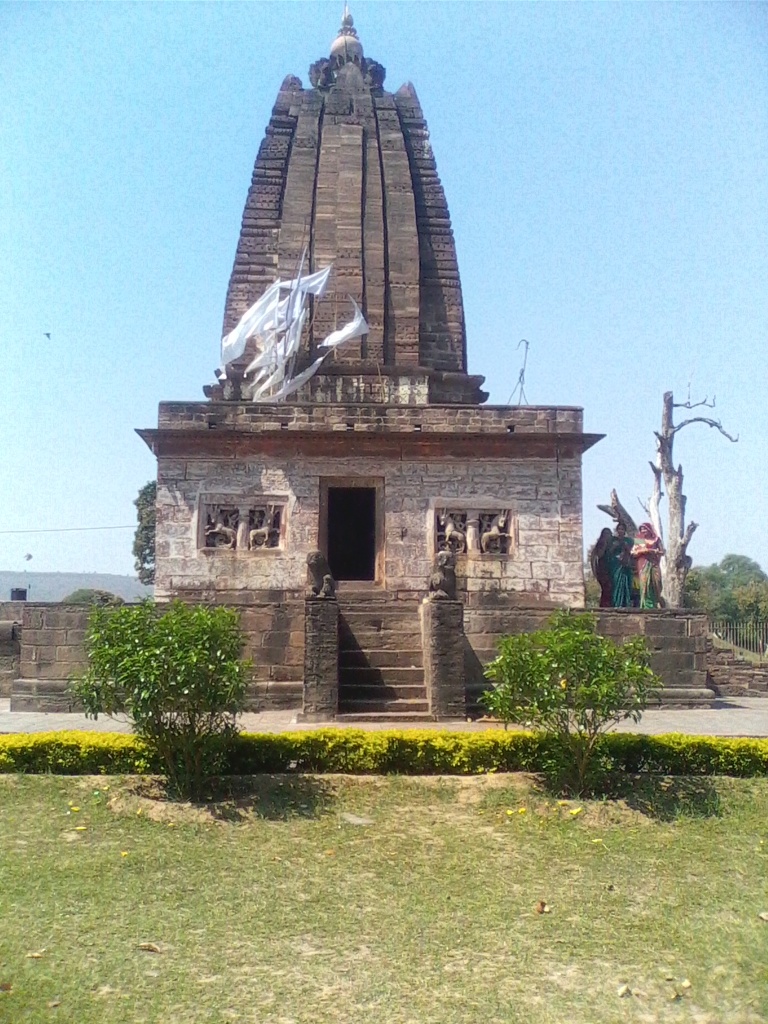Nachna Chaumukhnath Shiva Temple- Madhya Pradesh

Address
Nachna Chaumukhnath Shiva Temple- Nachna Village, Kachhgawan, Madhya Pradesh 488333
Diety
Chaumukhnath
Introduction
The Chaumukhnath Temple, also known as the Chaturmukh Mahadeva Temple, is dedicated to Lord Shiva and is located in Nachna Village, Madhya Pradesh, India. This temple is renowned for its unique Linga, which features four faces carved on the four cardinal directions. Each of these faces represents one of the five aspects or manifestations of Lord Shiva,
Vamadeva: This face symbolizes the aspect of creation, where Lord Shiva is the source of all existence.
Tatpurusha: It represents the aspect of maintenance, where Lord Shiva sustains and preserves the universe.
Aghora: This face signifies the destructive aspect of Lord Shiva, where he is the force of dissolution and transformation.
Isana: It represents the aspect of Lord Shiva that is beyond space, symbolizing his transcendental nature.
Sadyojata: This face embodies introspection and contemplation, reflecting Lord Shiva’s role as the deity of meditation and self-realization.
Puranic Significance
The Chaumukhnath Temple in Nachna is a remarkable structure with a complex architectural history. The exact early history of the site is not well-documented. The temple complex consists of two significant temples, one dedicated to Parvati and the other to Lord Shiva (Chaumukhnath Temple).
Parvati Temple: The Parvati temple is believed to have been built earlier. It has a square plan and a unique two-storey structure. The architecture of this temple is distinct from the Chaumukhnath Temple.
Chaumukhnath Temple: The Chaumukhnath Temple is dedicated to Lord Shiva and is different in style from the Parvati temple. It also has a square plan but features a spire (shikhara) that symbolically represents Mount Kailash, the abode of Lord Shiva.
Architecture: The Chaumukhnath Temple stands on a jagati platform and is characterized by its curved spire as it rises towards the sky, reaching a height of approximately 40 feet (12 meters). The temple is richly decorated with architectural elements such as trellises, figures (mithunas), niches, and decorative panels (udgamas) in the Pratihara style.
Reconstruction: The temple underwent significant reconstruction in the 9th century, likely on the original 5th-century platform. During this reconstruction, many original parts were reused, including windows from the late 5th-century temple.
Outer Wall: The outer wall of the temple is adorned with intricate architectural decoration, giving it an unusual and captivating appearance. It features trellises, divine attendants, niches, and decorative panels.
Dikpalakas: Each corner of the temple’s walls is adorned with images of Dikpalakas, who are guardian deities representing the cardinal directions.
Multi-Directional Entry: Unlike the Parvati temple, the Chaumukhnath Temple has stairs leading to its entrance from multiple directions. It opens toward the east, symbolically facing the rising sun.
Five Storeys: The temple’s spire is divided into five storeys, each adorned with carvings of ganas (divine attendants) and river goddesses on its windows and doors.
Special Features
The Chaumukhnath Temple in Nachna boasts intricate details and unique features within its sanctum.
Lingam: The sanctum (garbhagriha) houses an impressive Shivalingam that stands approximately 4.67 feet (1.42 meters) tall. This lingam is unique because it has four faces, known as the mukhalinga. Three of the faces depict Lord Shiva in a calm and meditative state, with closed eyes and a smiling expression. In contrast, the fourth face portrays an energized and active aspect of Shiva. This face has a wide-open mouth, raised nostrils, and slightly bulging open eyes, signifying the fierce form of Bhairava.
Pancha Mukha Aspects: The four faces of the mukhalinga represent the Pancha Mukha aspects of Shiva iconography. Each face is aligned with one of the cardinal directions: Tatpurusha (east), Aghora (north), Vamadeva (west), and Satyojatha (south). The fifth face, Ishana, is beyond space, time, and all directions, symbolizing the formless absolute in Hindu theology. These faces symbolize the various aspects of Shiva, including creation, maintenance, destruction, and introspection, representing the metaphysical Brahman.
Windows: One of the highlights of the temple is its three Jali windows, which allow a limited amount of light to enter the dark sanctum. These windows are intricately designed and serve both functional and artistic purposes. The Jalis at the Chaumukhnath Temple are significantly more elaborate than those found in the Parvati Temple. They feature a multilayered composition with decorative figures and richly profiled shells reminiscent of wooden models. The Jali design includes lattice patterns on the inside and three small arcades on the exterior, formed as horseshoe arches.
The combination of the mukhalinga with its four faces and the beautifully crafted Jali windows makes the interior of the Chaumukhnath Temple a unique and spiritually significant space for devotees and visitors alike.
Century/Period/Age
1000- Years old
Managed By
Archaeological Survey of India (ASI)
Nearest Bus Station
Devendra nagar
Nearest Railway Station
Satna
Nearest Airport
Khajurho






